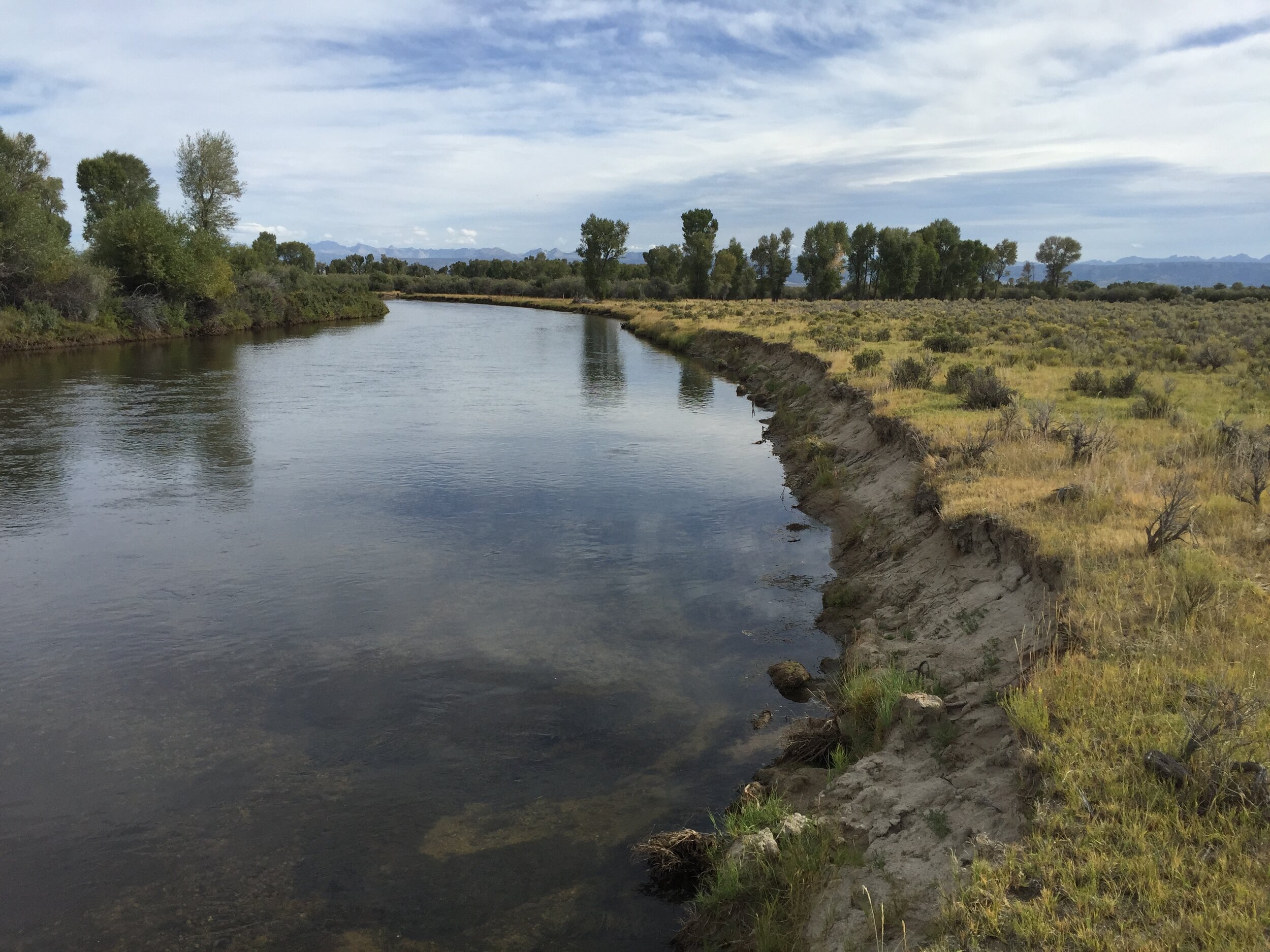The New Fork River is the uppermost major tributary of the Green River. The Gas Wells project reach is located on BLM land approximately 8 miles downstream of Boulder, WY. IMA was contracted by Trout Unlimited to produce a habitat assessment, hydrologic report, geomorphic assessment and restoration design for the entire 1.5 mile reach. In addition, the contract included survey and design work for developing a boat access and parking area. This section of the New Fork is characterized by widespread bank erosion, very little in-stream cover, poor pool development, high width to depth ratios, and insufficient sediment transport capacity. Field data collection included pebble counts, cross sections, a full longitudinal profile, flow measurements, in stream habitat evaluation, riparian vegetation evaluation, bank erosion hazard index measurements, and various Natural Channel Design stream stability indices assessments. The BANCS model was employed to rank eroding streambanks and prescribe appropriate stabilization measures. The design focuses on stabilizing eroding banks, re-establishing woody vegetation, increasing pool to pool spacing, and reducing channel widths to promote sediment transport. The first phase of construction was completed during 2021.
An extensive topographic and bathymetric survey was performed to gather the necessary data for geomorphic assessments and design
Bank erosion was quantified using the BANCS model
The boat ramp site presents several challenges that the design team must overcome
Surveying large river systems can be challenging
Toewood installation
Restored river bank with toe-wood and riparian woody vegetation - immediately following construction
Boat ramp construction
Restored river bank with toe-wood and riparian woody vegetation - 1.5 years post construction







